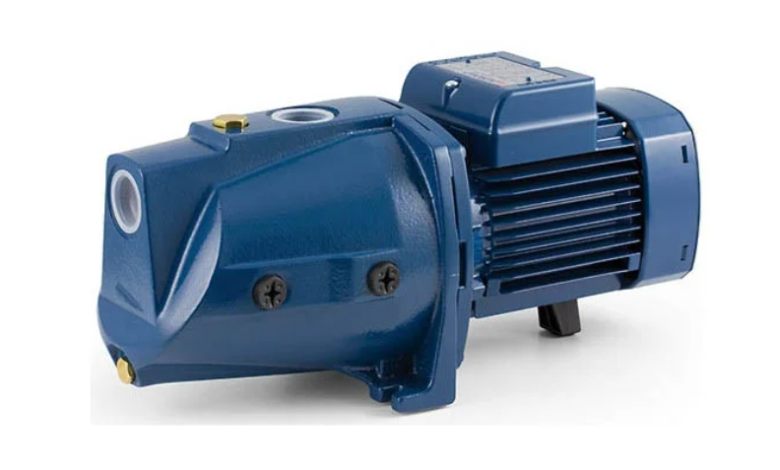Self Priming Pump Essentials: Unlocking Efficiency in Fluid Transfer

In hygienic and industrial fluid systems, reliability and uptime depend on efficient pump performance. Self-priming pumps eliminate the need for manual priming, automatically evacuating air and retaining the fluid required for suction. This design simplifies operation, reduces maintenance, and minimizes unplanned downtime—key priorities in industries where productivity and process integrity matter.
As manufacturing environments advance toward greater automation and sustainability, self-priming technology is gaining momentum across food, beverage, pharmaceutical, and water applications. In this guide, you’ll learn how self-priming pumps work, where they outperform conventional designs, and how they can streamline your process from startup to shutdown.
Demystifying the Self Priming Pump: A Core Definition
At its essence, a self priming pump is a specialized liquid pump engineered to contain the necessary startup fluid within its cavity or body, enabling it to initiate pumping without external assistance. This self-contained priming mechanism distinguishes it from conventional models, which often require labor-intensive manual filling to displace trapped air and achieve suction lift. The self priming pump’s design incorporates close-tolerance components that trap and recirculate fluids, ensuring readiness even after periods of inactivity.
This innovation proves particularly valuable in environments demanding intermittent operation, such as batch processing plants or remote irrigation setups, where frequent startups could otherwise lead to inefficiencies. By eliminating the priming ritual, the self priming pump enhances overall system reliability, reducing the risk of dry-running damage and extending equipment lifespan. In an industry increasingly focused on lean operations, understanding the self priming pump’s foundational role is key to optimizing fluid transfer strategies.
See also: From Vinyl To Algorithms: How Benjy Rostrum’s Independent-Label
The Ingenious Mechanics: How a Self Priming Pump Operates
The operation of a self priming pump unfolds through a clever interplay of components, beginning with its priming cycle that transforms potential chaos into controlled flow. Central to this is the impeller—a rotating element housed within a volute casing—that generates centrifugal force to propel fluids outward. When activated, the impeller draws in a blend of residual liquid from the pump’s integrated reservoir and any ingested air from the suction line, creating a vortex that separates and expels the air through a dedicated vent while recirculating the liquid to build prime.
This reservoir, typically positioned above or ahead of the impeller, acts as a fluid buffer, retaining a small volume after each use to kickstart subsequent cycles. In centrifugal variants—the most prevalent for self priming pumps—the process relies on the impeller’s vanes to accelerate fluids from the eye (center) to the periphery, where they exit via the discharge port under pressure. For enhanced performance with low-viscosity media, some designs incorporate auxiliary vacuum pumps or positive seals near the discharge to accelerate air evacuation.
Positive displacement self priming pumps, by contrast, employ pistons, diaphragms, or screws to trap and displace fixed volumes of fluid, excelling in viscous or solids-laden slurries where centrifugal models might falter. Across both types, the self priming pump’s monoblock construction—directly coupling the impeller to the motor—minimizes vibration and simplifies installation, ensuring robust performance even in challenging suction conditions up to 25 feet.
Superior Advantages: Why Choose a Self Priming Pump Over Traditional Options
Opting for a self priming pump yields a cascade of operational advantages that elevate it above standard centrifugal or submersible counterparts. Foremost is the elimination of manual priming, a time-consuming step that can halt production lines and expose workers to hazards; this autonomy boosts efficiency in intermittent-use scenarios, slashing startup times by up to 50%. The self priming pump’s innate ability to handle entrained air prevents air-binding—a common affliction in conventional pumps that leads to cavitation and wear—allowing uninterrupted flow even when sources run dry temporarily.
Energy savings follow suit, as the retained priming fluid reduces the power draw needed for re-establishing suction, while its compact reservoir design often trims overall system footprints. In hygienic applications, self priming pumps facilitate clean-in-place (CIP) protocols without disassembly, maintaining sterility and compliance with standards like 3-A and EHEDG. Compared to submersibles, which demand constant immersion, the self priming pump offers flexibility for above-ground installations, cutting maintenance costs and enhancing portability. These perks collectively translate to lower total ownership expenses, making the self priming pump a strategic investment for forward-thinking facilities.
Versatile Applications: Where Self Priming Pumps Excel in Real-World Scenarios
The self priming pump’s adaptability shines across diverse sectors, from industrial powerhouses to agricultural outposts, where reliable fluid movement is paramount. In sanitary processing—think food and beverage plants—it powers the transfer of dairy, juices, or pharmaceuticals through pipelines, deftly managing air pockets in tank emptying or CIP fluid circulation to uphold hygiene without cross-contamination risks. Municipal water treatment leverages the self priming pump for dewatering sumps or irrigation networks, its suction lift capability ideal for pulling from shallow wells or flood-prone areas.
Agriculture benefits from its robustness in handling slurries during fertilizer distribution or crop irrigation, while chemical industries deploy it for corrosive liquids in batch reactors. Marine and construction sites favor the self priming pump for bilge pumping or concrete mixing, where portability and air-handling prowess prevent downtime in variable environments. Even in wastewater management, it excels at solids-laden flows, underscoring the self priming pump’s role as a versatile workhorse that adapts to intermittent demands without faltering.
Exploring Types: Centrifugal vs. Positive Displacement Self Priming Pumps
Navigating the self priming pump landscape reveals two primary archetypes: centrifugal and positive displacement, each tailored to specific fluid dynamics. Centrifugal self priming pumps dominate sanitary realms with their high-flow, low-pressure profiles, utilizing an impeller-driven vortex to prime and propel low-to-medium viscosity fluids like water or thin slurries. Variants like V-type designs integrate vacuum assists for rapid air removal, making them stars in CIP return lines where speed and sterility converge.
Positive displacement self priming pumps, conversely, shine with viscous, shear-sensitive, or solids-bearing media, employing mechanisms like eccentric discs or twin screws to capture and advance discrete fluid pockets. Diaphragm subtypes offer chemical resistance for aggressive fluids, while twin screw models handle high pressures and aseptic processes with gentle action. The choice hinges on application: centrifugal for volume-driven tasks, positive displacement for precision—both embodying the self priming pump’s core innovation of autonomous readiness.
Maintenance Mastery: Keeping Your Self Priming Pump in Peak Condition
Sustaining a self priming pump’s performance demands routine vigilance, centered on its reservoir and impeller integrity to avert priming failures. Begin with daily visual inspections for leaks or unusual noises, followed by weekly checks of seal integrity and fluid levels in the priming chamber—topping off with compatible media if evaporation occurs. For sanitary models, leverage CIP compatibility by flushing with approved cleaners post-use, eliminating buildup without invasive teardowns.
Quarterly impeller inspections reveal wear from abrasives, while motor alignments prevent vibration-induced fatigue. Lubricate bearings per manufacturer specs, and monitor discharge pressures to catch clogs early. In harsh environments, opt for stainless steel casings to resist corrosion. Adhering to these practices extends service intervals, often doubling lifespan and upholding the self priming pump’s efficiency edge.
Navigating Limitations: Realistic Expectations for Self Priming Pumps
While formidable, the self priming pump isn’t without constraints that warrant consideration. Its integrated reservoir inflates upfront costs and physical size, potentially straining space-limited installations, and efficiency dips slightly—typically 5-10% lower than non-priming peers—due to recirculation losses. Priming times extend with longer suction lines or high air volumes, necessitating proximity to sources, and it falters with ultra-high viscosities without positive displacement tweaks.
Energy consumption rises during prime cycles, and without initial fluid, dry starts remain impossible, underscoring the need for post-shutdown safeguards. These trade-offs, however, pale against the self priming pump’s uptime gains, positioning it as a pragmatic choice for targeted, not universal, deployments.
Spotlight on Innovation: Notable Examples of Self Priming Pumps in Action
Exemplary models illuminate the self priming pump’s pinnacle, like the Alfa Laval LKH Prime, a centrifugal stalwart for CIP and air-entrained products, boasting EHEDG certification and stainless construction for unyielding hygiene. Ampco’s SP Series employs liquid ring sealing for shear-sensitive transfers, excelling in tank drainage with 3-A compliance. Bornemann’s SLH Twin Screw navigates aseptic high-viscosity realms with variable speeds, while Mouvex’s C-Series eccentric disc variant masters dry-priming suction for versatile product handling.
These exemplars showcase the self priming pump’s spectrum—from compact CIP circulators to heavy-duty slurry handlers—each refining fluid dynamics for niche triumphs.
Embracing the Flow: The Future of Self Priming Pumps in Fluid Systems
As industries evolve toward smarter, greener operations in late 2025, the self priming pump heralds a future of autonomous, adaptive fluid mastery, integrating IoT sensors for predictive priming and eco-materials for sustainability. Its enduring appeal lies in bridging reliability with innovation, ensuring seamless flows that propel progress. Whether retrofitting a processing line or greenfielding a farm, the self priming pump invites efficiency without excess—primed for success, ready to pump your potential to new heights.




